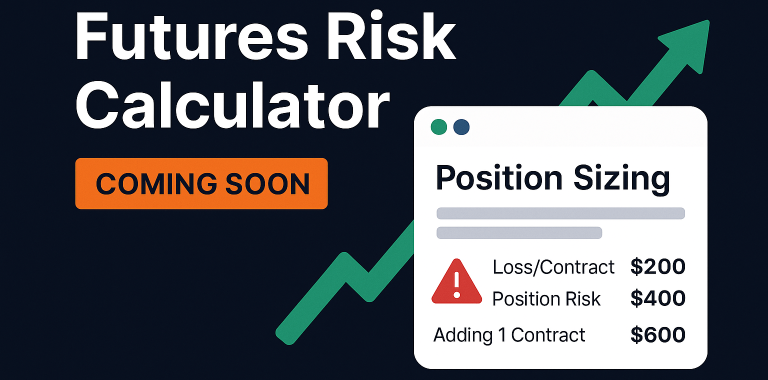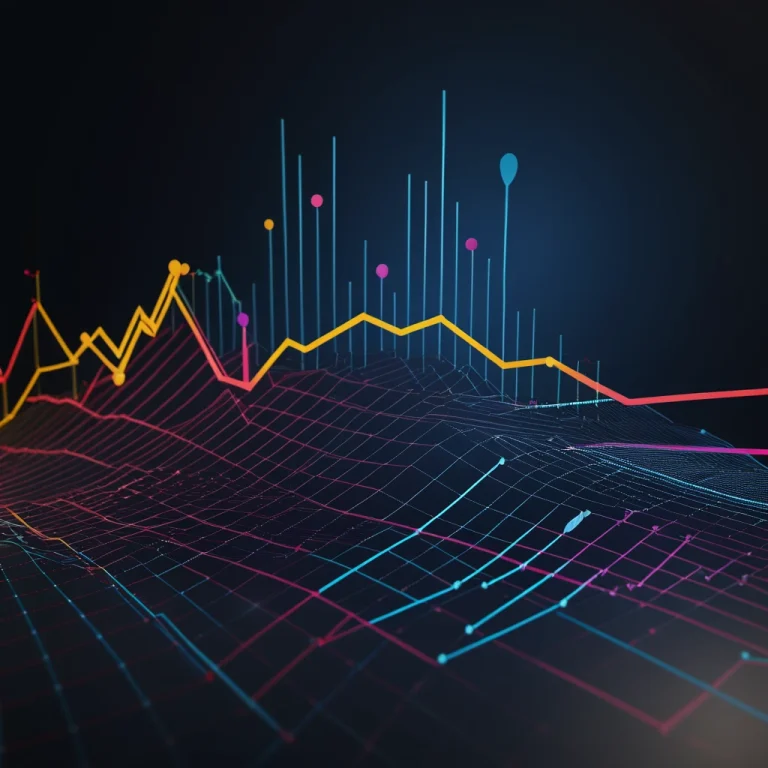The trading technology that actually improves your results.
Every company wants to sell you the “ultimate trading solution.” Most tools are overpriced, overcomplicated, or completely unnecessary. Here’s what actually helps you trade better and what’s just marketing fluff.
The Tool Hierarchy: What You Actually Need
Essential (Can’t Trade Without These)
Trading platform – Execute orders and manage positions
Real-time data – Current prices and market information
Internet connection – Stable, fast connection to markets
Basic charting – See price movements over time
Important (Significantly Improve Results)
Position size calculator – Manage risk properly
Economic calendar – Know when market-moving events occur
Trading journal – Track and analyze your performance
Price alerts – Get notified of important price movements
Nice to Have (Helpful But Not Critical)
Advanced charting software – Detailed technical analysis
News feeds – Real-time market news and analysis
Screening tools – Find trading opportunities
Backtesting software – Test strategies on historical data
Probably Useless (Marketing Hype)
AI trading bots – Usually lose money or break during volatility
Signal services – By the time you get the signal, it’s too late
“Professional” indicators – Most just repackage basic math
Social trading platforms – Following others rarely works long-term
Trading Platforms: Your Main Tool
Platform Categories
Broker-Provided Platforms
Examples: thinkorswim, Interactive Brokers TWS, Robinhood app
Pros: Usually free, integrated with your account, good support
Cons: Limited customization, tied to one broker
Best for: Most traders, especially beginners
Third-Party Platforms
Examples: MetaTrader 4/5, TradingView, NinjaTrader
Pros: More features, work with multiple brokers, highly customizable
Cons: Often cost extra, steeper learning curve
Best for: Active traders, specific strategy requirements
Web-Based Platforms
Examples: TradingView, most broker web platforms
Pros: Work on any device, no downloads, always updated
Cons: Dependent on internet, fewer features than desktop
Best for: Casual traders, traveling, backup access
What Makes a Platform Worth Using
Speed and Reliability
Order execution – Sub-second fills during normal markets
Platform uptime – 99.9%+ availability during trading hours
Data feeds – Real-time quotes without delays
Backup systems – Phone/web access when main platform fails
Essential Features
Multiple order types – Market, limit, stop, OCO orders
Risk management tools – Position sizing, stop losses
Basic charting – Multiple timeframes, drawing tools
Account management – Real-time P&L, margin requirements
Advanced Features (If You Need Them)
Level II data – Market depth and order flow
Options chains – For options trading strategies
Screening tools – Find stocks/currencies meeting criteria
Automated trading – Execute strategies without manual intervention
Charting Software: Beyond Basic Charts
When You Need Advanced Charting
Complex technical analysis – Multiple indicators, custom studies
Multiple timeframes – Comparing different time periods
Drawing tools – Trendlines, Fibonacci, patterns
Market correlation – How different assets move together
Popular Charting Solutions
TradingView
Cost: Free with ads, $15-60/month for premium
Pros: Best web-based charts, social features, works with many brokers
Cons: Can be slow with lots of indicators, premium features costly
Best for: Part-time traders, technical analysis enthusiasts
MetaTrader 4/5
Cost: Usually free with forex brokers
Pros: Extensive indicator library, automated trading, widely supported
Cons: Outdated interface, mainly forex-focused
Best for: Forex traders, automated strategies
Professional Platforms
Examples: Bloomberg Terminal, Refinitiv Eikon
Cost: $2,000+ per month
Pros: Everything you could ever want
Cons: Massive overkill for individual traders
Best for: Institutional traders only
Trading Tools That Actually Help
Position Size Calculators
What they do: Calculate how much to risk based on your stop loss
Why essential: Prevents you from risking too much per trade
Free options: Our calculator, Excel spreadsheets, phone apps
Cost: Free to $10/month
Economic Calendars
What they do: Show upcoming news events that move markets
Why important: Avoid getting caught in unexpected volatility
Free options: Investing.com, ForexFactory, TradingEconomics
Cost: Free to $20/month for premium features
Trading Journals
What they do: Track your trades and analyze performance
Why crucial: Identify what works and what doesn’t
Simple option: Excel spreadsheet with trade details
Advanced: Edgewonk, TraderSync ($10-30/month)
Price Alert Systems
What they do: Notify you when prices hit specific levels
Why useful: Don’t need to watch charts constantly
Built into: Most platforms and mobile apps
Standalone: TradingView alerts, phone apps
Market Data and News
Real-Time Data
Level I data – Basic bid/ask prices (usually free)
Level II data – Market depth ($10-30/month per exchange)
Historical data – For backtesting ($20-100/month)
Multi-market data – Stocks + forex + futures (expensive)
News Services
Free sources – Reuters, MarketWatch, Yahoo Finance
Premium services – Bloomberg, Refinitiv ($50-500/month)
Specialized – Forex news, crypto news, sector-specific
Social media – Twitter, Reddit (free but noisy)
Risk Management Tools
Stop Loss Calculators
Purpose: Determine where to place stop losses based on volatility
Reality: Simple math you can do manually
Cost: Usually free or built into platforms
Portfolio Analyzers
Purpose: Show correlations and risk across multiple positions
Useful for: Traders with many simultaneous positions
Cost: $20-100/month for good ones
Volatility Indicators
Purpose: Measure how much prices typically move
Common tools: ATR (Average True Range), VIX for stocks
Reality: Built into most charting platforms
Backtesting and Strategy Development
When Backtesting Is Useful
Testing systematic strategies – Rules-based trading systems
Optimizing parameters – Finding best settings for indicators
Risk assessment – Understanding potential drawdowns
When Backtesting Is Misleading
Discretionary trading – Judgment calls can’t be backtested
Market regime changes – What worked in 2019 might not work now
Over-optimization – Curve-fitting to past data
Backtesting Software
Free options: TradingView strategy tester, Excel modeling
Professional: AmiBroker ($300), TradeStation ($99-300/month)
Reality check: Simple strategies often work better than complex ones
Mobile Trading Apps
What Mobile Is Good For
Position monitoring – Check trades while away from desk
Quick trades – Simple buy/sell orders
Price alerts – Get notified of important moves
Account management – Deposits, withdrawals, statements
What Mobile Sucks For
Complex analysis – Charts are too small
Day trading – Need speed and precision
Multi-asset strategies – Jumping between apps is clunky
Advanced orders – Complicated order types are hard on phones
→ [Detailed Trading Apps Guide →]
Automation and Algorithmic Trading
When Automation Makes Sense
Repetitive strategies – Same rules applied consistently
24-hour markets – Forex and crypto don’t sleep
Emotionless execution – Remove fear and greed from trading
Multiple markets – Monitor more opportunities than humanly possible
When Automation Fails
Market regime changes – Programs can’t adapt to new conditions
Unusual events – Black swan events break algorithms
Over-optimization – Strategies that work perfectly on paper fail in reality
Technology failures – Computers crash, internet goes down
Automation Options
Simple alerts – Platform notifications (free)
Expert Advisors – MetaTrader automated strategies
Professional systems – TradeStation, NinjaTrader ($100-500/month)
Custom programming – Hire developers ($1,000-10,000+)
Common Tool Mistakes
Tool Overload
Problem: Using 10 different platforms and services
Reality: More tools don’t make you a better trader
Solution: Master one platform before adding others
Chasing the Latest Technology
Problem: Constantly switching to new “revolutionary” tools
Reality: Basic tools from 10 years ago still work fine
Solution: Focus on trading skills, not technology upgrades
Expensive Solutions for Simple Problems
Problem: Paying $500/month for tools when $50 would work
Reality: Simple often beats complex in trading
Solution: Start cheap, upgrade only when you hit limitations
Free vs. Paid: What’s Worth Paying For
Worth Paying For
Reliable platform – When free platforms crash during volatility
Real-time data – Delayed data can cost you money
Professional execution – Direct market access for active traders
Quality education – Good courses and mentoring
Not Worth Paying For
Basic indicators – RSI, moving averages are free everywhere
Generic signals – Mass-market trade recommendations
Fancy charts – Pretty colors don’t improve results
“AI-powered” anything – Usually basic algorithms with marketing spin
Building Your Tool Stack
Beginner Setup (Under $50/month)
Platform: Broker’s free platform
Charts: TradingView free version
Calculator: Our free position sizing tool
Journal: Excel spreadsheet
News: Free sources (Reuters, MarketWatch)
Intermediate Setup ($50-200/month)
Platform: Professional platform or premium broker access
Charts: TradingView Pro or MetaTrader with custom indicators
Data: Real-time feeds for your markets
Tools: Paid position calculator, economic calendar
News: One premium news service
Advanced Setup ($200-500/month)
Platform: Multiple professional platforms
Data: Level II data, multiple market feeds
Analysis: Professional backtesting software
Automation: Custom programming or advanced Expert Advisors
Risk management: Portfolio analysis tools
Bottom Line: Tools Don’t Make Traders
The best trading setup:
- Works reliably when you need it most
- Fits your budget without straining your capital
- Matches your trading style and time commitment
- Grows with you as your skills improve
- Stays out of your way so you can focus on trading
Remember: Warren Buffett became a billionaire using basic tools. Your P&L depends on your decisions, not your software.
Ready to explore specific tools? Check our detailed guides:
→ [Trading Platforms Comparison →] – Desktop, web, and mobile options
→ [Trading Apps Guide →] – Mobile trading that actually works
→ [Free Trading Tools →] – Calculators and resources you’ll actually use
No Tilt Trading – Trading Without the Noise

